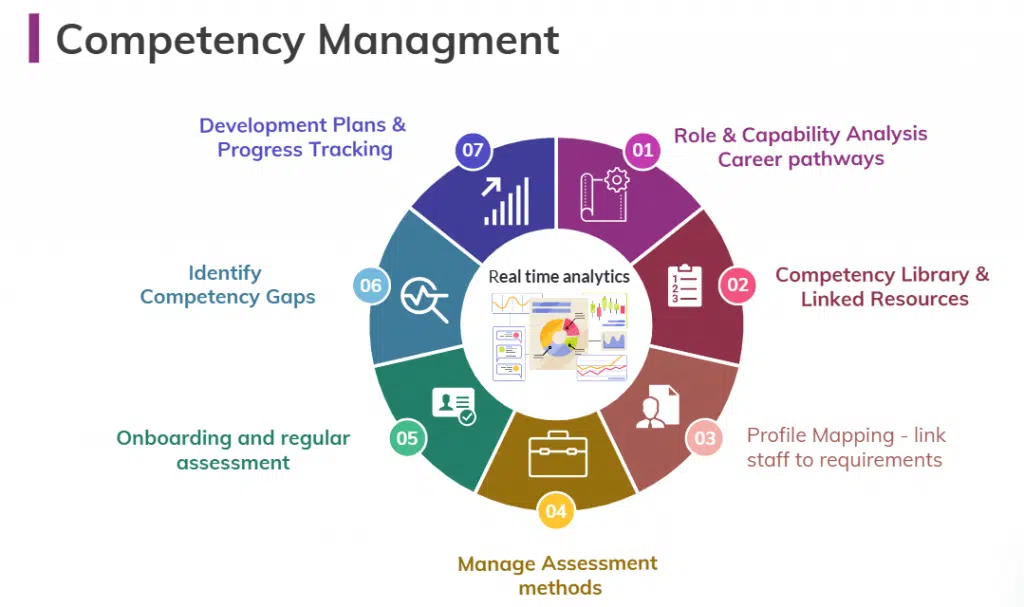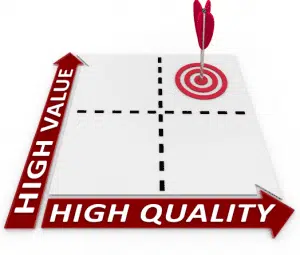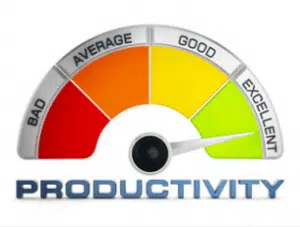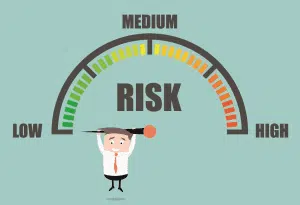Competency Management Business Case
Competency management turns strategy into clear role expectations, evidence-based assessment, and targeted development. Done well, it lifts quality, reduces risk, improves hiring and internal mobility, and creates the data you need for workforce planning and transformation.
The success of an organization will depend on the people you surround yourself with. Donald Rumsfeld
Why organisations struggle without competency management
- Training does not mean competence
Attendance or certificates don’t prove people can do the work in your context. Transfer of learning is variable; without on-the-job evidence, leaders are guessing. - Generic competency models and vague wording
One-size-fits-none libraries mix traits with behaviours. Items like “communicates effectively” invite subjective ratings and weak development plans. People can’t see what to do differently. - Poor visibility of skills
Most teams can’t answer with certainty who can perform which procedure, at what level, with what recent evidence? That affects staffing, mobility and audit readiness. - Compliance without assurance
Tick-box training and expiry spreadsheets don’t satisfy regulators or boards when incidents occur. You need versioned definitions, assessments, and a trail of evidence.
What a competency management system should do
Model: clearly defined competencies of different types with descriptions and observable unambiguous indicators. Clearly anchored rating scales. Optional proficiency levels that step up by seniority – task complexity. Most organizations will have different models with different structures for different purposes.
Map: Competency requirements to job families, roles and profiles with assessment guides. Career pathways.
Assess: multiple methods (observation, skill demonstrations, knowledge tests, documentation review, simulations) with evidence
Analyse: Skills matrix reports. Real-time proficiency levels and skills gaps, risk heatmaps
Develop: Link learning resources to competencies, generate personal development plans to close gaps and for career development. Follow up and progress tracking.
Govern: Competency model and mapping versioning. Capture authors and changes. Access controls and audit logs.

Where competency management fits
Values based behaviours are a special type of competency used in performance management – maintain in the central competency library and map to profiles for use in performance management- they should appear in appraisals/reviews automatically.
Certificates and credentials – these infer competency – which may not be demonstrated on the job. Keep these in role requirements and the individual’s Capability Passport.
The Capability Passport should give an integrated view of all role requirements and competencies that are met, and any gaps.
10 reasons it’s critical now
1. Align people to strategy
Translate organizational priorities/scorecards into role requirements. Job linked competency models ensure workforce capability is aligned with the strategy.
The future of work is a hot topic. As technology pushes people out of jobs, other more complex roles are needed to manage that technology. A dynamic competency management system provides practical tools to analyze future as well as current workforce needs.


2. Embed Quality & Safety habits
- Embed key procedures in task based technical and safety competencies. Use demonstrated on job competence as well as training attendance as evidence for quality audits. No shortcuts or misinterpretation.
- Work safety must be a habit, so safe responses to new situations are automatic. A competency system with clear competencies, regular assessment and on job development can help to embed workforce safety behaviours and culture
3. Compliance - audit ready
Many organizations operate under regulatory regimes requiring compliance with particular requirements. Demonstrate who is competent for which risks, with dates, methods, and evidence.


4. Improve Productivity
Set clear expectations, ensure staff have the competence to deliver. Shorten time-to-proficiency for new hires and role changes. Identifying performance gaps and diagnosing the cause is a critical part of management.
5. Hiring that predicts performance
Use job analysis and competency models and competency based work simulations to verify beyond CVs and generic certificates. Qualifications don’t always give an accurate picture of skills and knowledge. Experience in other roles may be completely different in terms of operating environment, challenges, technology and modus operandi. CV and qualification fraud is rife.


6. Skills visibility & workforce development
See who can do what today, where gaps are emerging, and who’s closest to ready for new projects.
It is more cost effective to develop talent from within than to compete for it in a shrinking labour market. The training spend more targeted and effective
7. Shape Organizational culture
According to W. Edwards Deming “Research shows that the climate of an organization influences an individual’s contribution far more than the individual himself”.
The core competencies of the organization are a way to communicate expectations. Competencies have the power to shape behavior if leaders set the example and people are recognized and rewarded for exhibiting values driven behaviours.


8. Risk management
People contribute to failures – human capital risk. More so today with skills shortages and more frequent moves. A competency management system provides real time detailed visibility into workforce capability. It helps to avoid costly operational mistakes. It provides a means to develop and ensure an agile and competent workforce in a rapidly changing environment.
9. Engagement & mobility
Competency management systems provide transparent career pathways and assessments. Employees can see competency requirements and matched learning resources for the next role.


10. Change and Transformation
Be ready for the future – a dynamic competency management systems enables identification, mapping and development of skills needed for new technologies.
Practical Building blocks
Start with one job family
1. Draft a minimal set of high-quality competencies, with observable indicators – formula – verb-context-standard, one behavior per indicator. Identify and link relevant learning resources
2. Choose appropriate scales
Yes/No for strict standards; Agreement for values; Frequency or competence level for developmental competencies.
3. Set validation and evidence standards by activity risk level
4. Map requirements into profiles and showcase them in career pathways
5. Pilot with assessments and review competency matrix – baseline competency levels and gaps
6. Plan individual development to close gaps and or for career development interests.
Return on Investment - what to review
Benefit buckets (measure over 12 months)
• Quality/safety: reduction in incidents, rework and downtime × average cost per event.
• Time-to-proficiency: days saved × new hires/movers × daily loaded cost.
• Training efficiency: % of budget shifted to targeted, on-the-job resources × improved usefulness/completion.
• External hiring saved: roles filled internally × average external premium/agency fees.
• Audit/admin time saved: hours saved preparing evidence × loaded hourly rate.
• Bid/project wins (optional): additional revenue attributable to verified capability in proposals.
Objections you’ll hear (and answers)
“We already have training.” Training does not mean competence on the job. You need demonstrated on job competence. evidence
“It’s too subjective.” Assessment is not subjective if competencies are well defined with unambiguous statements and where the activity is high stakes validation methods and examples substantiate ratings made.
“It’s a lot to build.” Start with core competencies , then move on to technical competencies for one job family. Use subject matter experts to surface and validate the content Add the basic relevant to all roles first – then add as needed to cover specific job roles. Validate with a pilot group. Then move on to the next job family.
“It’s too much work for managers” – Managers will appreciate the clear real time view they have of all aspects of staff capability. A good system make it easy for managers to do and review assessments.
